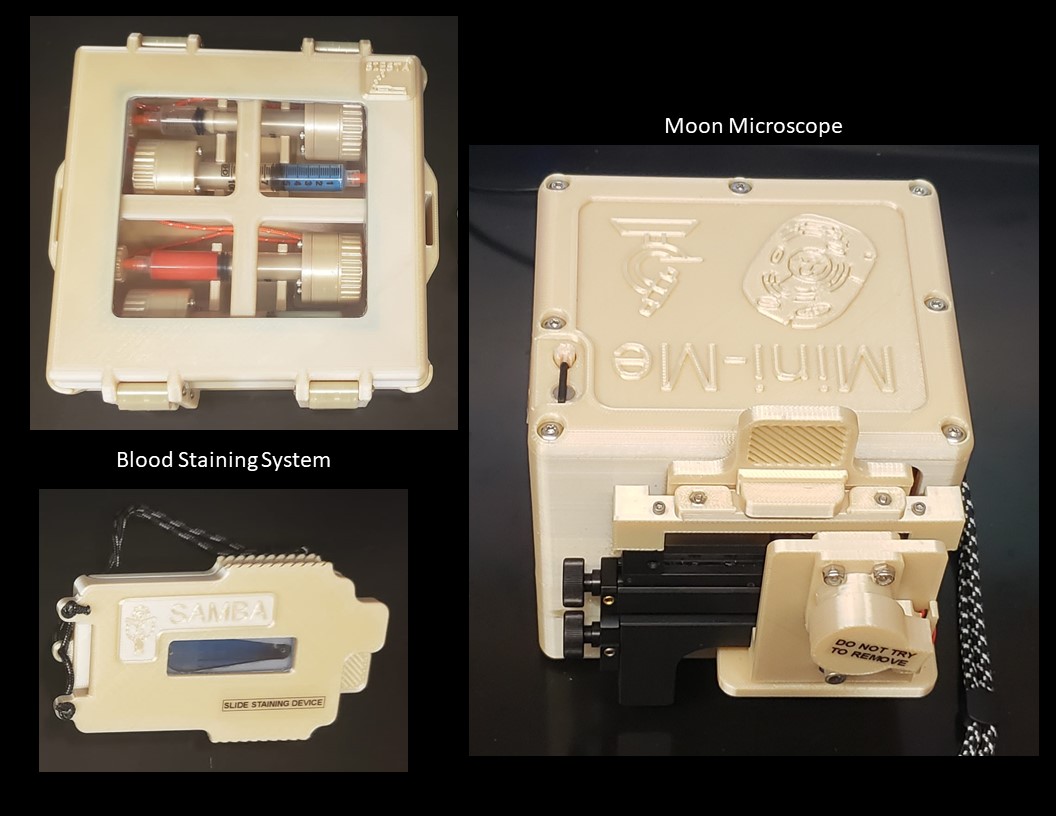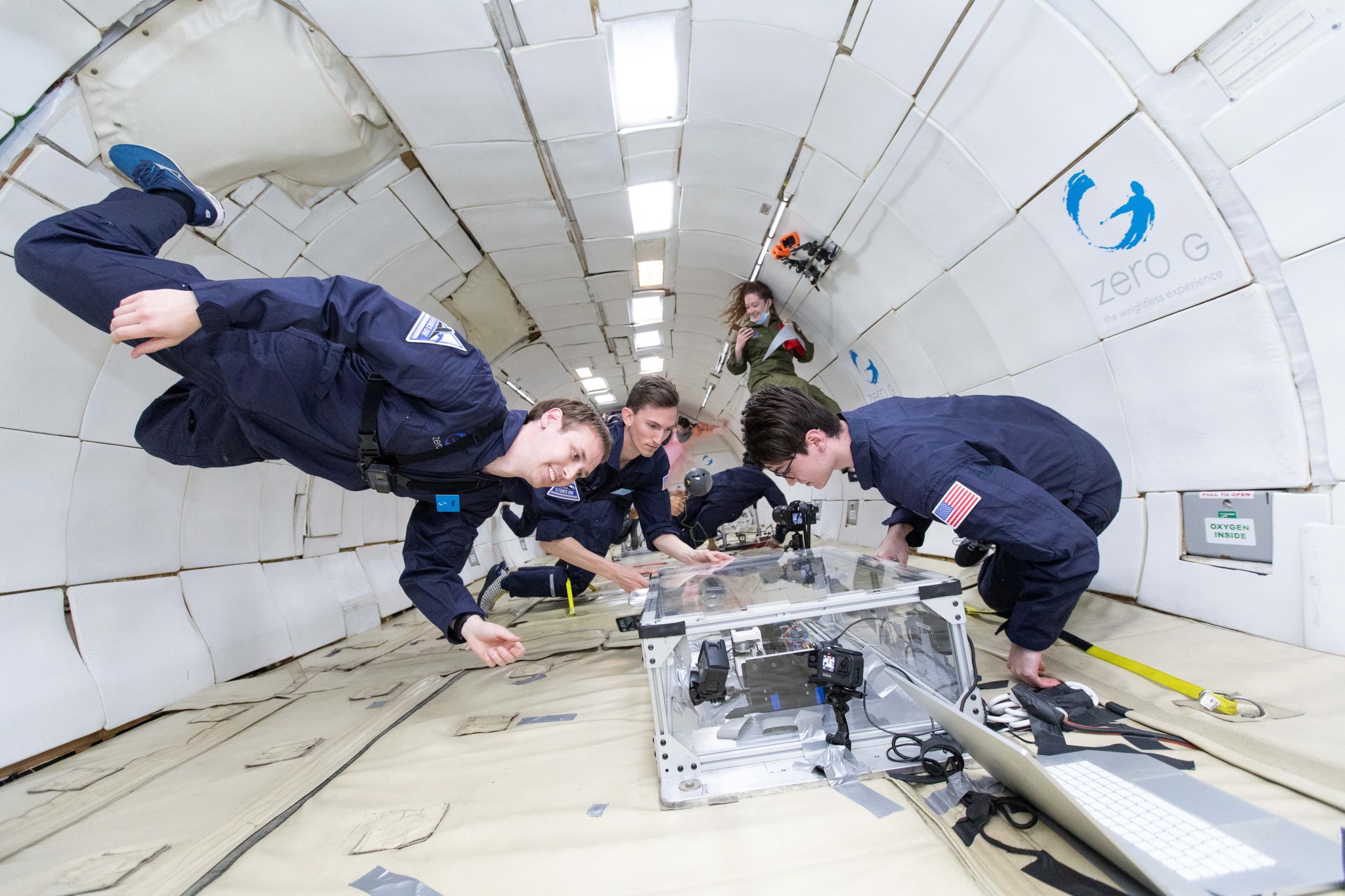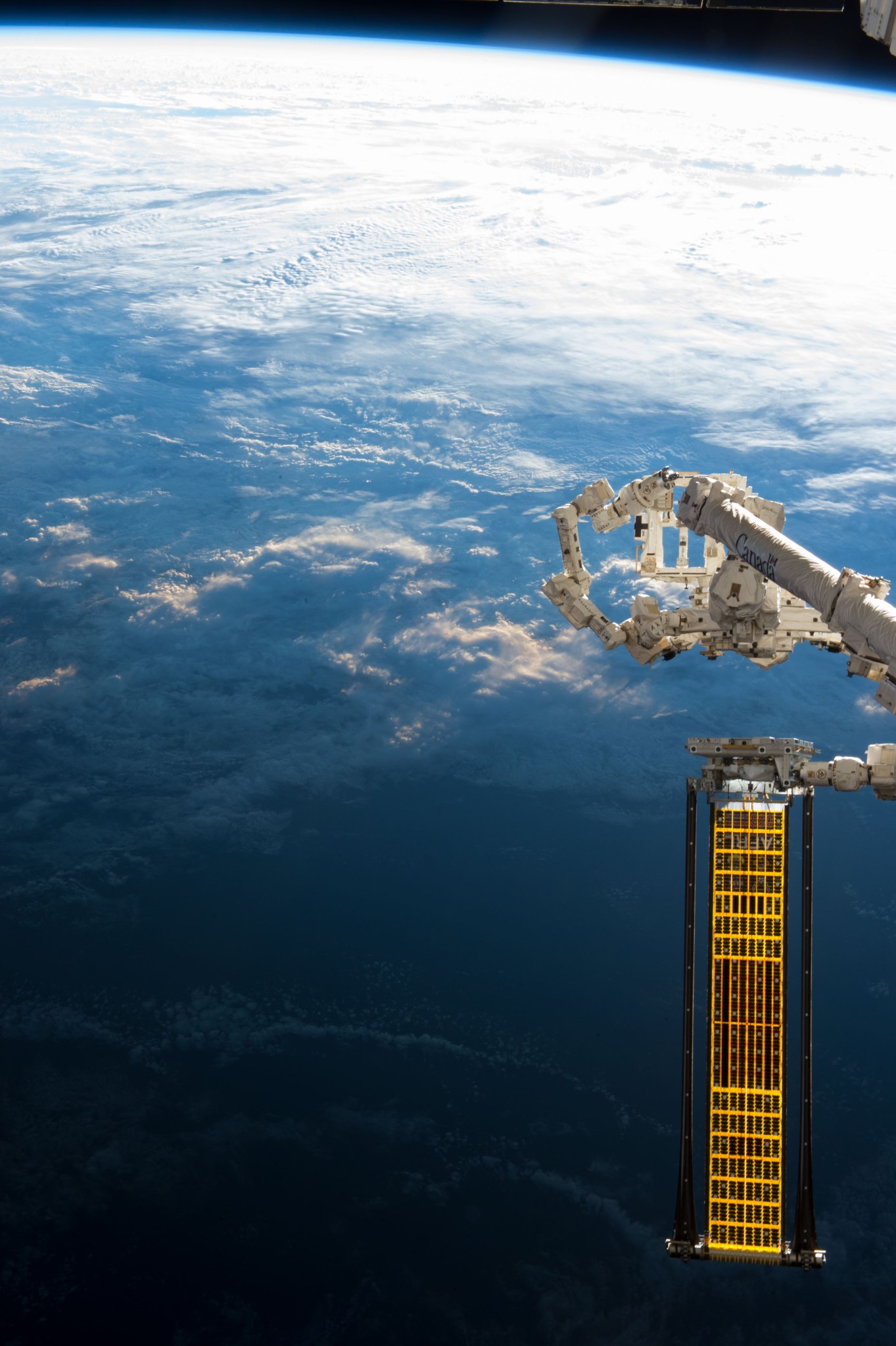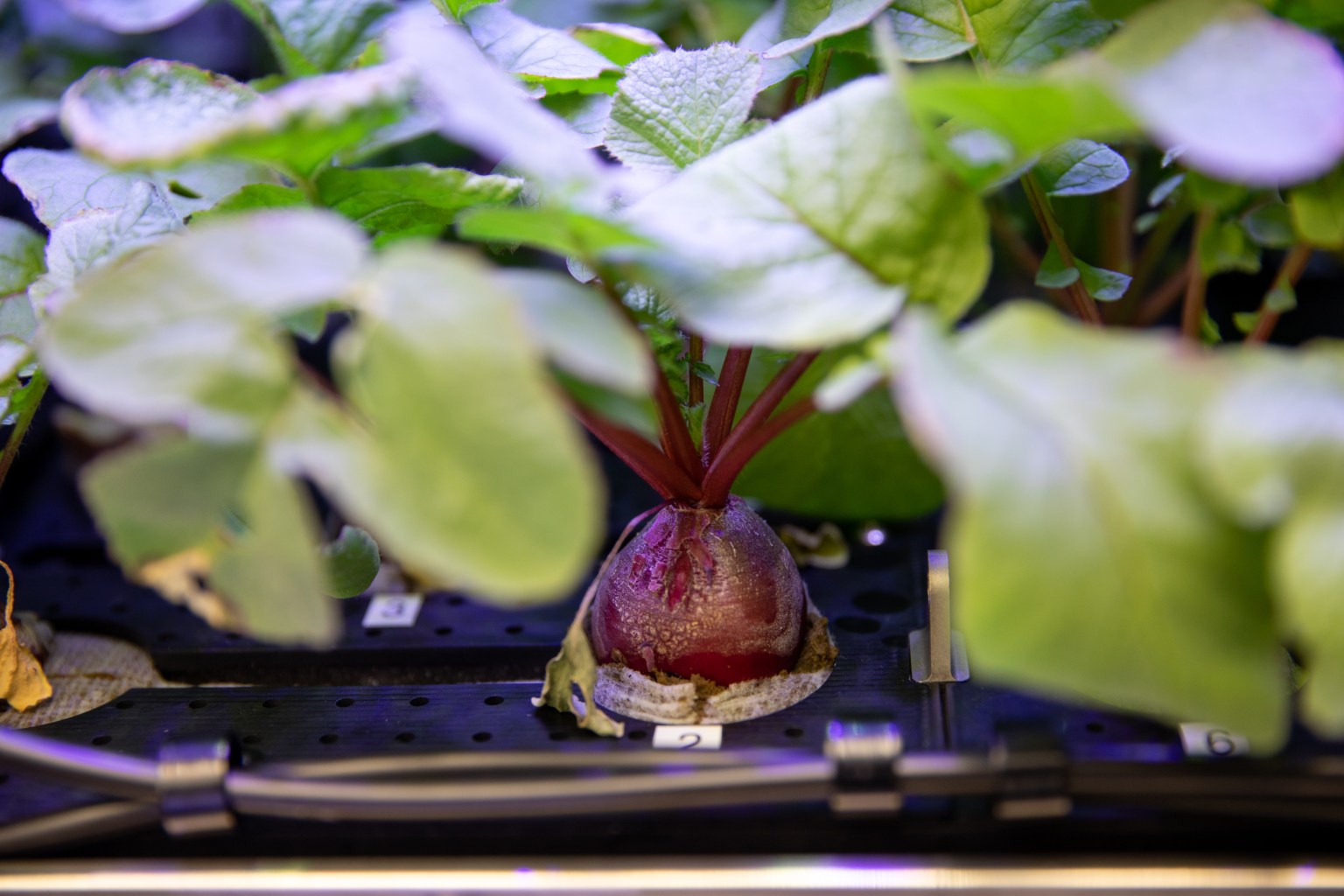SpaceX’s 26th commercial resupply mission (CRS) is scheduled to launch to the International Space Station from NASA’s Kennedy Space Center in Florida in late November. The Dragon spacecraft carries scientific experiments and technology demonstrations that explore growing plants in space, creating nutrients on-demand, in-space construction, and more.
Download high-resolution photos and videos of the research mentioned in this article.
Here are details on some of the research launching to the space station:
Big hopes for small tomatoes
A continuous source of nutritious food is essential for long-duration exploration missions, and the typical pre-packaged astronaut diet may need to be supplemented by fresh foods produced in space. Researchers have been testing a plant growth unit on station known as Veggie and have successfully grown a variety of leafy greens. Veg-05, the next step in that work, focuses on growing dwarf tomatoes.
“We are testing tomatoes, looking at the impacts of light spectrum on how well the crop grows, how delicious and nutritious the tomatoes are, and the microbial activity on the fruit and plants,” says Gioia Massa, NASA Life Sciences project scientist and VEG-05 principal investigator. “We also are examining the overall effect of growing, tending, and eating crops on crew behavioral health. All of this will provide valuable data for future space exploration.”
Massa adds that tomatoes can be eaten fresh and are nutritious and widely consumed. Red Robin, the dwarf cherry tomato variety used in the investigation, grew well during ground testing and produced a large crop of nutritious and palatable fruit.
Diagnoses on the fly
Moon Microscope tests a kit for in-flight medical diagnosis that includes a portable hand-held microscope and a small self-contained blood sample staining device. An astronaut collects and stains a blood sample, obtains images with the microscope, and transmits images to the ground, where flight surgeons use them to diagnose illness and prescribe treatment.
“We do not have a profound clinical problem on the space station, but crew members do experience changes in their immune systems,” says NASA immunologist and principal investigator Brian Crucian. “During deep space missions, all stressors increase and our ability to care for the crew is reduced, a combination that could increase certain clinical risks. This project is designed to create a diagnostic laboratory capability that is highly miniaturized and compatible with microgravity and operational constraints. An ill crew member could perform the blood smear, imaging, and transmission of images in minutes.”
The kit could provide diagnostic capabilities for crew members in space or on the surface of the Moon or Mars, as well as the ability to test water, food, and surfaces for contamination. The hardware also may enable improved medical monitoring on upcoming Artemis and Gateway missions.
Building bigger structures
On Earth, gravity deforms large objects such as the beams used in large-scale construction. Microgravity enables fabrication of longer and thinner structures without this deformation. Extrusion demonstrates a technology using liquid resin to create shapes and forms that cannot be created on Earth. Photocurable resin is injected into pre-made flexible forms and a camera captures footage of the process. The capability for using these forms could enable in-space construction of structures such as space stations, solar arrays, and equipment.
“This experiment leverages the microgravity environment to extrude both common and complex branching shapes,” says principal investigator Ariel Ekblaw, director of the Massachusetts Institute of Technology Media Lab Space Exploration Initiative. “Our method reduces the time to produce key parts needed for daily mission use and it may support future space construction of large structures like trusses and antennae. The Extrusion investigation builds on our additive manufacturing and in-space self-assembly workstreams.”
The Space Exploration Initiative supports a range of microgravity and lunar research across science, engineering, art, and design. The experiment is packed inside a Nanoracks Black Box with several other experiments from the MIT Media Lab and is sponsored by the ISS National Lab.
On-demand nutrients
Supplying adequate nutrition is a major challenge to maintaining crew health on future long-duration space missions. Many vitamins, nutrients, and pharmaceuticals have limited shelf-life, and the ability to make such compounds on-demand could help maintain crew health and well-being. BioNutrients-2 tests a system for producing key nutrients from yogurt, a fermented milk product known as kefir, and a yeast-based beverage.
The investigation kicks off phase two of the five-year BioNutrients program, headed by NASA’s Ames Research Center and managed by Game Changing Development in NASA’s Space Technology Mission Directorate. The program began with the launch of BioNutrients-1 in 2019. BioNutrients-2 employs a smaller system with a heated incubator that promotes growth of beneficial organisms.
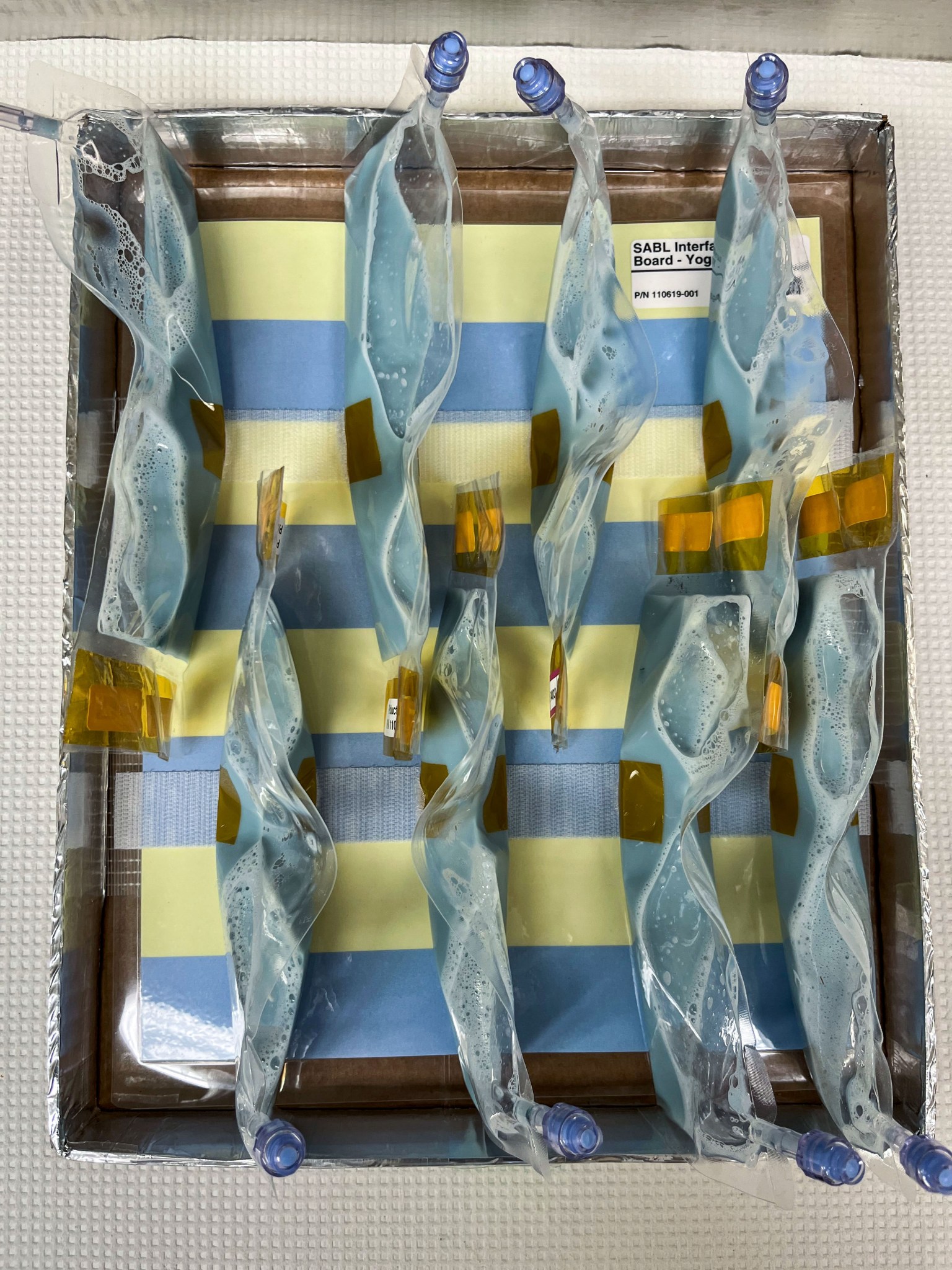
“This experiment adds follistatin, a protein therapeutic used to maintain muscle mass, as well as the fermented milk products yogurt and kefir,” says principal investigator John Hogan of NASA Ames. “We also are testing a new lightweight bag system for effective microbial storage and growth in microgravity and evaluating our food safety techniques.” For a third investigation, the researchers plan to engineer a single yeast strain to make up to four nutrient products.
The researchers also are working to find efficient ways to use local resources to make bulk products such as plastics, construction binders, and feedstock chemicals. Such technologies are designed to reduce launch costs and increase self-sufficiency, extending the horizons of human exploration.
Adding solar power
Two roll-out solar arrays, or iROSAs, launched aboard SpaceX-22 and were installed in 2021. These solar panels, which roll out like a rug or a yoga mat using stored kinetic energy, expand the energy-production capabilities of the space station. The second set, launching in the trunk of SpaceX-26, provides a 20 to 30% increase in power for space station research and operations.
“The first two arrays have been performing outstandingly well,” says Matt Mickle, development projects senior manager at Boeing. “The solar cells are immensely more powerful than previous generations. We made minor modifications to the hardware for subsequent launches that improve operational efficiency.”
These arrays, the second of three packages, upgrade 50% of the station’s power channels. Roll Out Solar Array technology was first tested on the space station in 2017. ROSA has been used on the NASA DART asteroid mission and is planned for use on the Gateway lunar outpost, a vital component of NASA’s Artemis mission. The iROSA program provides a great example of using the space station as a proving ground for the technology and research needed to explore farther into space.
Easing gravity transitions
Travelers to space all face the transition from one gravity field to another. On future exploration missions, astronauts may encounter three different gravity fields: weightlessness while traveling in space, the gravity of another planet, and Earth’s gravity when they return. These transitions can affect spatial orientation, head-eye and hand-eye coordination, balance, and locomotion and cause some crew members to experience space motion sickness.
The Falcon Goggles hardware captures high-speed video of a subject’s eyes, providing precise data on ocular alignment and balance.
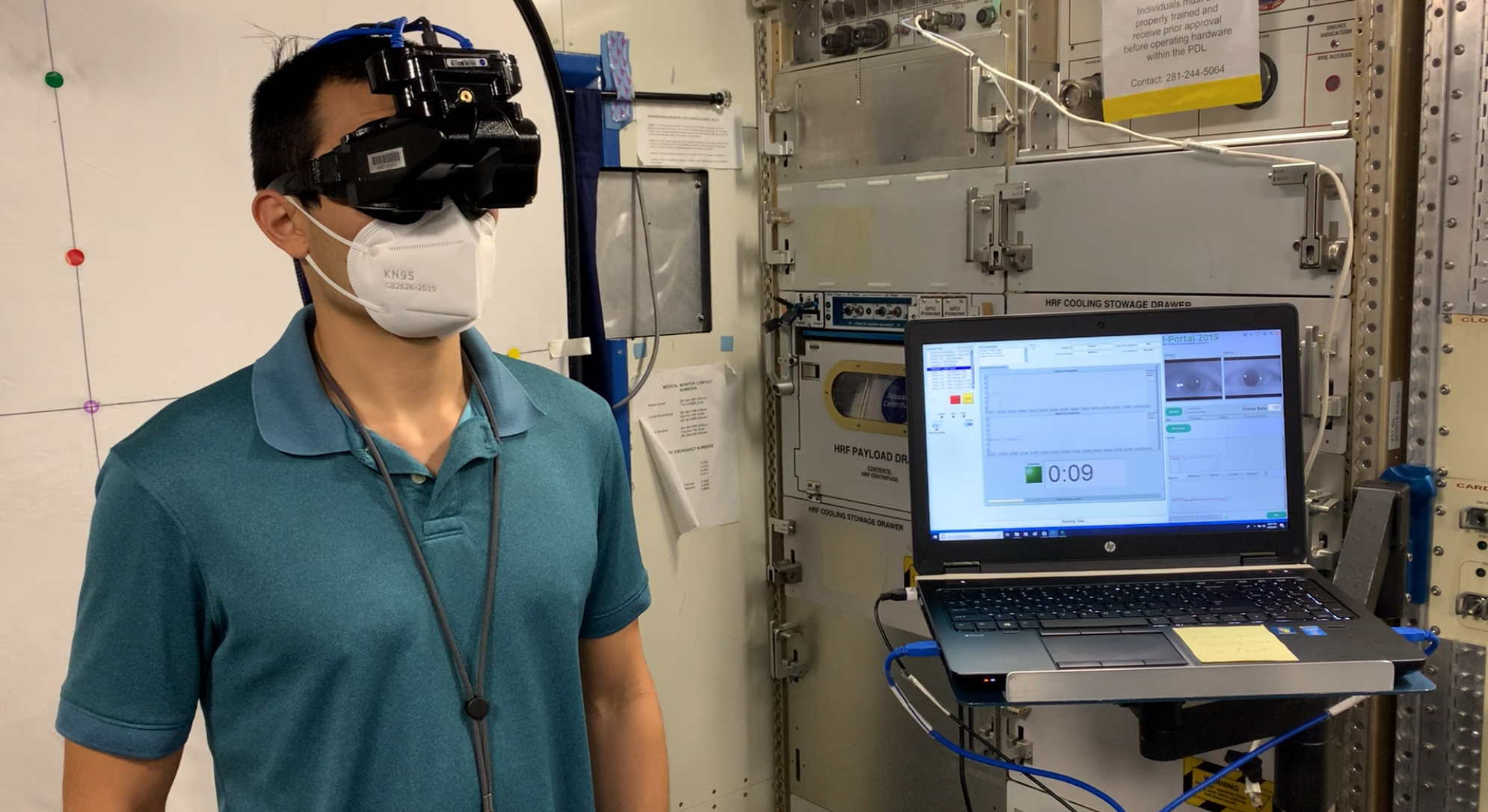
“These goggles could better inform our researchers of the impacts of microgravity on crew members and their ability to adapt and work in new gravities,” said Dr. Cherie Oubre, deputy flight scientist with NASA’s Human Research Program. “Devices like this will be invaluable as we work toward preparing astronauts for long-duration exploration missions to the Moon and beyond to Mars, and also can improve similar technologies here on Earth.”
Melissa Gaskill
International Space Station Program Research Office
Johnson Space Center

























